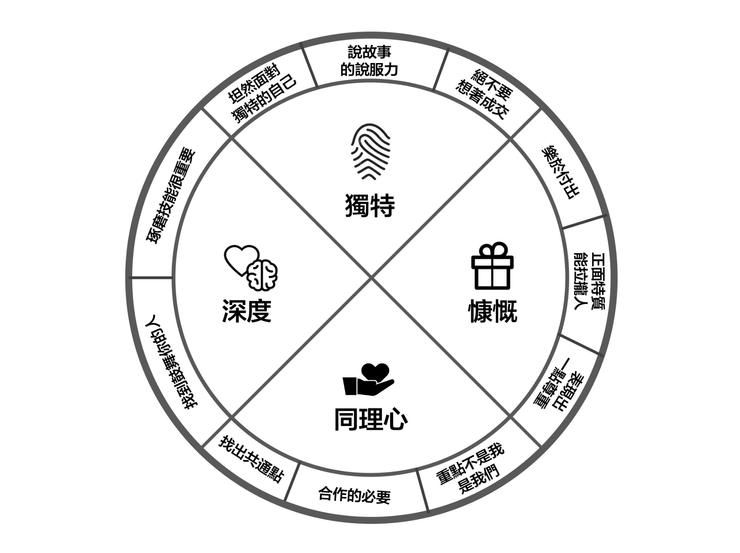The following is an except of a research paper on Relational Leadership as part of the course works submitted to Western Seminary Ed.D program.
Operational Guidelines
Relational leadership requires time to develop. The following is an attempt to use an acronym of “L-E-A-D-E-R-S-H-I-P” as guidelines in cultivating the relationship between leaders and followers as Paul to the leaders in Ephesus (Acts 20:17-38).
1. L-ove is the most excellent way that Paul was dealing with the problems of leadership and issues of spiritual gifts (1 Cor. 12-14, Rom 12, and 1Tim 1).
2. E-quip the saints and edify the church are the most essential relationship and function of the church between leaders and followers (Eph 4).
3. A-ble to teach and lead, as a crucial part of the great commission to make follower by “teaching them to obey all that I’ve commented to you” (Mat. 28, 1,2 Timothy, Titus).
4. D-irection-driven not data-driven, is a spiritual direction relationship, where relational leaders first learn to hear well from God and provide spiritual direction to followers in a formal or non-formal setting.
5. E-xcellent in leading right, leaders are right a lot in making planning, implementing, and reflecting for improvement (“right a lot” is an Amazon leadership principle that helps the company became one with most followers/ customers nowadays, the Church can learn and contribute to this topic).
6. Re-productive, Relevant, Renewal, Reflective-Practitioners, literally leaders give birth to new leaders by their inspiration, instruction, delegation, coaching, and passing on from generation to generation.
o Relevant- 3 factors to deal with- corporate culture, personal leadership, stakeholders’ emotion, (DNA)
§ Develop a Lab Mentality, always experimenting, trying, failing, learning
§ Never Stop Learning, leaders are learners, skills will bring success (Ecclesiastes 10:10)
§ Acknowledge the grieve, “"There is no growth without change. There is no change without loss. There is no loss without pain. There is no pain without grief"
§ Don’t try to be in style,
§ nothing stays the same, the only way to be eternal is to be timeless, look at your organization and find what never change, vision is to see the current opportunity and jump on it, what needs to change and what never need to change is the winning combination, build on what is not going to change, people life and problems
§ Ask the right questions and answer them rightly
o Renewal- when you study church history it always starts through certain stages:
§ first stage is personal renewal, in the heart after holiness
§ then the corporate renewal, one of the ways you know a church is having corporate renewal is the singing gets better, and people stay longer after church
§ third aspect of a resurgence is a "missional renewal" or "purpose renewal,"
§ structural renewal because as an organization grows you have to change structure over and over
§ finally, cultural renewal the climate of the nation actually changes
7. S-ubmissive/ Spiritual Authority first as an important discipline, to God then to all people, in Christ through a form of institutional authority as practiced by the Alliance denomination. Dr. Rod Reimer, Alliance Seminary professor, has once entered a season to study Moses and learned that spiritual authority is given, developed, and exercises by having face-to-face relationship with God. This is his definition, “spiritual authority is rooted in identity, expended through intimacy, and activated by faith” as it is seen with Moses winning the battle in Exodus 17, and with a police officer stopping a car with given authority.
8. H-umility, integrity, venerability, and transparency that Christ has modeled, and our culture has desperately needed.
9. I-ntegrity before intelligence, leader is first a human being before a human-thinking/doing, one can lead as far as one’s character and charisma, connection and capability, in order to influence followers. A leader’s integrity has to be accountable to the leadership team contextually through multiple intelligences (IQ, EQ, AQ, CQ, RQ, SQ, TQ etc.).
10. P-artnership with long term commitment and eternal investment in followers’ life.
Other resources:
By Ron Edmondson on Oct 26, 2023
Great leaders are multidimensional. While continuing to improve, great leaders have achieved certain characteristics which help them achieve success.
Humility.
Great leaders are willing to surrender “their” way when it’s not the best way. They realize and appreciate the strength of a team.
Intentionality.
Great leaders continue to learn. They have mentors. They read. They continue their education through conferences or school. They know they can’t help others grow if they aren’t personally growing.
Compassion.
Great leaders consider the needs of others ahead of their own. They care about people beyond what people can do for them personally.
Integrity.
Great leaders never separate character from their definition of quality or success. They know there can be nothing of real value if those who are trying to follow can’t give their respect to the leader.
Passion.
Great leaders have the ability to rally a team and articulate the path to victory. They can communicate to spur momentum and garner support.
Vision.
Great leaders see things others can’t see or, for whatever reason failed to pursue. They take people where they need to go, but may be afraid to go on their own.
Strength.
Great leaders have the discipline to follow through on commitments. They weather the storms of time. They are still standing firm when others are dropping out of the race.



